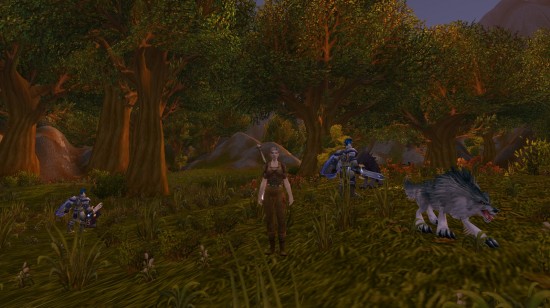My long-time readers probably know that I pretty much only use virtual worlds for work. I don’t play role playing games. I don’t go to social events.
Meanwhile, I keep saying that if you want to see where enterprise technology will be in five years, just take a look at today’s best-selling games. Which yes, does make a hypocrite.
The only games I’ve played in the last few years are the kind that you put on your iPhone to use up time at the bus stop — Sudoku, FarmVille. These are definitely not the future of enterprise technology. But twenty years ago, when these kinds of graphics-based games were all the rage for the first time, they did provide a hint of the kind of user interfaces we would soon see with the Macintosh and Microsoft Windows.
No, the games I’m talking about now are the ones that pull in millions of users and have sales in the billions of dollars — the Calls of Duty, the Worlds of Warcraft — the epic-scale, immersive, collaborative, three-dimensional games that really grab people hard.
Well, I finally bit the bullet and downloaded World of Warcraft. I was inspired by some articles about gamification I was working on. Several sources told me that they looked to games like World of Warcraft for inspiration when designing their corporate gamification projects — training simulations, knowledge sharing platforms, sales contests, and so on.
The first surprise? How long the download took. As an OpenSim user, I’m used to quick entry into new grids. Worst case, I might have to download a new viewer, which is usually just a few minutes. With World of Warcraft, you pretty much download the entire game, which took a couple of hours on my high-speed connection.
I guess this makes the game itself go faster, since you don’t need to load in new content as you move around.
So that was the first surprise. And, personally, I don’t think OpenSim has anything to worry about here. A two-hour download and installation process is untenable for anyone looking to use a virtual world for casual meetings, training, support groups, and so on. The only place I can see it working is when a corporation creates a very large training simulations, and pushes it out ahead of time to the computers that will be running it.
No, for me, the first lesson was in how World of Warcraft balanced the need for navigation with immersion.
Really good immersion is often an obstacle to navigation – it takes time to travel around an area, and there’s stuff in the way that can block your view so it’s easy to get turned around and go the wrong direction. Especially when you’re new to a war zone, with everything coming at you at once and people rushing around, and explosions seeming to come from all directions, it’s easy to get confused.

In fact, World of Warcraft reminded me a lot of what it’s often actually like on the ground in a war zone — everybody is running around, nobody knows what’s going on, and people and equipment keep getting lost or wandering off.
This is an easy problem to fix. Just put maps and teleport buttons everywhere. Now nobody has to walk — they can just teleport to their next quest location. Unfortunately, by relying on these aids, you can easily lose track of your actual surroundings — like the way people blindly follow GPS instructions right into a lake.
In fact, I once spent several weeks attending meetings in a virtual fitness support group a couple of summers back and I never did learn my way around the four-region campus because I kept using teleport boards and landmarks to get around.
As a result, my memory of the experience is composed of distinct, isolated spots — the beach, the campfire, the restaurant, the meditation rooms, the gym. I don’t have a good idea of the place as a whole.
World of Warcraft strikes a balance between the two extremes with a navigation map that’s useful, but not too useful. it can help you find the things you need, but it doesn’t get in the way of you learning the local geography.
I’m in the process of building a new meetings venue now, and am facing the same dilemma. Do I put up teleport boards all over the place and make it quick and easy for people to get to their meetings? Do I post maps and give directions — say, in the form of color-coded paths? Do I create a public transport system that takes folks to different venues? Or do I create NPCs to take people where they need to go?
How are other people handling this issue — and how does it affect immersion for you?
- OSgrid back online after extended maintenance - April 16, 2025
- Analysts predict drop in headset sales this year - March 25, 2025
- OSgrid enters immediate long-term maintenance - March 5, 2025
